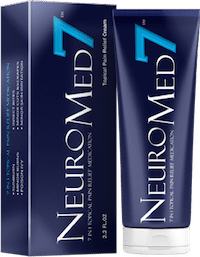Proper Topical Anesthetic Use
Proper topical anesthetic use includes a wide variety of applications to numb the skin. They are used to mitigate the sensations of pain, burn and itch where applied locally. Proper topical anesthetic use includes (among other) administration for:
- skin irritating conditions
- insect bites and stings
- contact dermatitis
- minor skin injuries
- minor burns
- injection pain reduction
- cannula insertion pain reduction
- blood draw needle insertion
- prior to minimally invasive aesthetic medicine procedures, such as microneedling, laser and filler injections
- numbing for tattoos
- numbing for piercings
- numbing for hair removal
- otherwise directed by a licensed physician
Proper topical anesthetic use includes only using enough of the product necessary to achieve the desired result. The topical anesthetic should be applied directly to the treatment area. Proper topical anesthetic use also means not applying to large surface areas and also only for acute situations or as otherwise directed by a licensed physician. Your physician may recommend other application methods for proper anesthetic use that include covering the treatment area with medical grade plastic covering such as a Tegaderm patch, however, this should only be applied as directed by your doctor.
Directions for Proper Topical Anesthetic Use:
For safe and effective use of this medicine:
- Follow your doctor’s instructions if this medicine was prescribed.
- Follow the manufacturer’s package directions if you are treating yourself.
- Unless otherwise directed by your doctor, do not use this medicine on large areas, especially if the skin is broken or scraped. Also, do not use it more often than directed on the package label, or for more than a few days at a time. To do so may increase the chance of absorption through the skin and the chance of unwanted effects. This is especially important when benzocaine is used for children younger than 2 years of age.
- Clean and sanitize the treatment area prior to application to ensure best absorption – this will also ensure that contaminants are not absorbed into the treatment area
- Apply liberally to treatment area – this means ensure all areas are fully covered
- Massage the cream in until fully absorbed
- Some clinicians cover with an occlusive dressing (plastic wrap or Tegaderm – or related – patch) in order to improve penetration (this should only be applied by the direction of a licensed physician)
- Onset is product dependent. Some products reach their peak effect in as little 15 – 20 minutes (as seen with NeuroMed Brand Topical Anesthetics), some products can take up to 60 minutes (such as with EMLA cream). Determining factors for onset and penetration include the addition of penetration enhancers (drivers) in the formulation.
- Remove cream once the treatment area seems adequately numb.
This medicine should be used only for problems being treated by your doctor or conditions listed in the package directions. Check with your doctor before using it for other problems, especially if you think that an infection may be present. This medicine should not be used to treat certain kinds of skin infections or serious problems, such as severe burns.
Read the package label very carefully to see if the product contains any alcohol. Alcohol is flammable and can catch on fire. Do not use any product containing alcohol near a fire or open flame, or while smoking. Also, do not smoke after applying one of these products until it has completely dried.
Proper topical anesthetic use on the face includes being very careful not to get it in the eyes, mouth, or nose.
Proper Topical Anesthetic Use Dosing
The dose of medicines in this class will be different for different patients. Follow your doctor’s orders or the directions on the label. The following information includes only the average doses of these medicines. If your dose is different, do not change it unless your doctor tells you to do so.
The amount of medicine that you take depends on the strength of the medicine. Also, the number of doses you take each day, the time allowed between doses, and the length of time you take the medicine depend on the medical problem for which you are using the medicine.
Proper Topical Anesthetic Use for benzocaine and for benzocaine and menthol combination
- For topical dosage forms (aerosol solution, cream, lotion, ointment, and spray solution):
- For pain and itching caused by minor skin conditions:
- Adults and children 2 years of age and older—Apply to the affected area three or four times a day as needed.
- Children younger than 2 years of age—Dose must be determined by your doctor.
- For pain and itching caused by minor skin conditions:
Proper Topical Anesthetic Use for lidocaine
- For topical dosage forms (aerosol solution, film-forming gel, jelly, ointment, and spray solution):
- For pain and itching caused by minor skin conditions:
- Adults—Apply to the affected area three or four times a day as needed.
- Children—Dose must be determined by your doctor.
- For pain and itching caused by minor skin conditions:
Proper Topical Anesthetic Use for tetracaine and for tetracaine and menthol combination
- For topical dosage forms (cream and ointment):
- For pain and itching caused by minor skin conditions:
- Adults and teenagers—Apply to the affected area three or four times a day as needed. The largest amount that may be used in a twenty-four-hour period is 30 grams (a whole tube of the medicine), but much smaller amounts are usually enough
- Children 2 years of age and older—Apply to the affected area three or four times a day as needed. Do not use more than 7 grams (about one-fourth of a tube of the medicine) in a twenty-four-hour period.
- Children younger than 2 years of age—Dose must be determined by your doctor.
- For pain and itching caused by minor skin conditions:
Proper Topical Anesthetic Use – Missed Dose
If you miss a dose of this medicine, take it as soon as possible. However, if it is almost time for your next dose, skip the missed dose and go back to your regular dosing schedule. Do not double doses.
Storage
Keep out of the reach of children.
Store the medicine in a closed container at room temperature, away from heat, moisture, and direct light. Keep from freezing.
Store the canister at room temperature, away from heat and direct light. Do not freeze. Do not keep this medicine inside a car where it could be exposed to extreme heat or cold. Do not poke holes in the canister or throw it into a fire, even if the canister is empty.
Do not keep outdated medicine or medicine no longer needed.

This information is not intended to be used as a medical guide or advice, but only for basic education purposes. Consult your physician prior to using any form of topical anesthetic products, OTC or prescription. It is best not to use or change the use of any topical anesthetic products without prior consent of your doctor.


